
数据科学杂志(英文)(Journal of Data Science)(国际刊号) 知网目次
- AMI入库
- 主管单位:
- 主办单位:
中国人民大学统计学院和教育部人文社科重点研究基地应用统计科学研究中心
- 国际刊号:
1680-743X;EISSN 1683-8602
- 国内刊号:
- 学科分类:
- 字数:
-
- 有无基金:
- 周期:
国际号刊-季刊
- 特殊属性:
外文期刊
- 电话:
- 邮箱:
JDS@ruc.edu.cn(官网邮箱)
- 复合因子:
0
- 综合因子:
0
- 收录:
知网目次
- 级别:
AMI入库
期刊简介
《数据科学杂志》期刊已被查看: 次
更新频次
单位占比
一作占比
投稿指南
1、该刊只有国际刊号。
2、投稿方式:在线投稿。
3、期刊网址:https://jds-online.org/journal/JDS
4、投稿网址:
https://www.e-publications.org/ruc/sbs/JDS/login
5、主办单位网址:
http://cfas.ruc.edu.cn/qk/fqml/qkjj3/index.htm
(中国人民大学应用统计科学研究中心)
http://stat.ruc.edu.cn/displaynews.php?id=6374
(中国人民大学统计学院)
6、官网邮箱:JDS@ruc.edu.cn
7、期刊刊期:季刊,一年出版4期。
8、微信公众号:中国人民大学统计学院(RUCstatistics)
2021年11月12日星期五
Journal of Data Science期刊简介
【微信公众号“RUCstatistics”信息】
Journal of Data Science创刊于2003年。创刊主编为台湾中研院赵民德博士和台湾辅仁大学谢邦昌博士。本刊历年来发表的研究成果涉及领域广泛,始终致力于推动数据科学方法在各领域的应用。从2019年起,主办权由中国人民大学统计学院和教育部人文社科重点研究基地应用统计科学研究中心承担。为进一步提高学术期刊办刊水平,涵养学术品牌,作为中国人民大学于2019年启动“学术期刊质量提升计划(2019-2021)”重点资助期刊之一,Journal of Data Science酝酿了多方位的改革与提升。自2020年7月起,由美国康涅狄格大学统计学系教授闫军博士担任主编。
Journal of Data Science投稿须知
【官网信息】
Submit your article
Before your submission,please visit our article types.
Article Types
To help the authors better understand the aim and scope of the journal, we proposed new sections as follows; not all sections have to appear in one issue.
Statistical Data Science
This section is the homebase of the reformed journal covering statistical methods that are motivated from realworld data science or big data. It is not for papers with technical proofs that push the frontiers of theoretical developments. In addition to classic topics in Statistics, cutting-edge works on big data, visualization, machine learning, and artificial intelligence are also welcome.
Computing in Data Science
Computing is an indispensable component of all data science and big data applications. As more journals on data science and big data emerge, it is of great interest for the data science community to have a highly regarded outlet with a specialization in computing, covering a wide spectrum from methods, algorithms, software implementations, to case studies. Existing journals on statistical computing have their own traditions and may not meet the increasing demands. Some research works on the cutting-edge problems may not fit well any existing journal.
This section covers the following types of articles.
1. Software: Articles here are similar to those in Journal of Statistical Software. They are not reference manuals but vignettes that introduce the methods being implemented as well as usage of the software with reproducible code chunks. The software implementation can be in any computer language with a sufficiently large user base. We will compete with Journal of Statistical Software for authors who are not satisfied with their prolonged review process.
2. Algorithms: Articles here focus on the performance side of the computing needs arising from domain applications. For example, one can propose algorithms which makes infeasible tasks feasible or speed up existing algorithms.
3. Methods: Articles here are similar to those in Journal of Computational and Graphic Statistics or Statistics and Computing. The computing methods need to be motivated by a domain application with the properties carefully studied.
Data Science in Action
Data Science is applied by nature. Applied papers in all statistical journals have the tendency of becoming more and more theoretical despite the original design. Statisticians and data scientists should go out to the field to work on applications. Applications of data science in all domains are welcome.
In addition to all domain applications, we consider entries from data science competitions. There are many data science competitions such as Kaggle, Kesci, and DataCastle, among others. We welcome winning teams of data science competitions to share their work in the form of an academic paper, with our trainings (the copyright issue on data needs to be solved).
This section is modeled after the Application and Case Study Section of the Journal of the American Statistical Association, the Biometric Practice Section of Biometrics, or papers in the Annals of Applied Statistics. Articles can present detailed case studies of data science or big data applications. The data and the computing code should be make available such that any interested reader can reproduce everything in the article from the data and the code. The problems can come from any research domain that involves data science and computing, including science, technology, engineering, medicine, health, social science, humanities, arts, among others.
Data Science Reviews
Reviews and tutorial articles on latest data science techniques can be of interest to readers who want to get into a new field or pick up new skills. Experts of certain fields are invited to write tutorial articles. This section can be modeled after the Statistical Science or the Tutorials in Biostatistics Section in Statistics in Medicine.
Education in Data Science
Education in data science is ever-evolving along with new methodologies, technologies, and application fields. Discussion on curriculum of data science and tools in teaching data science need a good outlet. This section will be modeled after the special issue on data science of The American Statistician. In addition, a subsection on training practice may publish articles from outstanding student projects.
Miscellaneous
This section contains articles that do not clearly fall into the sections above. For example, the articles that are not directly motivated from data science applications, such as those on new probability distributions that the journal published, can be published in this section.
The Philosophy of Data Science
The aim of this section is to highlight the role of critical scientific reasoning in data science by providing dedicated commentary by exemplars in the field. Instead of taking the typical approach of discussing how data science advances science, this section will discuss how the foundations of science underpin data science.
To submit Your Manuscript click here: https://www.e-publications.org/ruc/sbs/JDS/login
The following requirements must be followed as closely as possible. A technically acceptable manuscript that fails to follow these requirements may be returned for retyping, leading to delay in publication. We only accept submissions in PDF format. The Latex file must be provided after the manuscript is accepted.
Submission of Papers
Submission of a manuscript must be the original work of the author(s) and have not been published elsewhere or under consideration for another publication, or a substantially similar form in any language.
Authors are encouraged to recommend three to five individuals (including their research fields, e-mail, phone numbers and addresses) who are qualified to serve as referees for their paper.
Manuscript Preparation
All manuscripts should be written in English. Letters are generally no more than three journal pages. The supporting organization and the grant number should be given at the end of the manuscript. For more details of submission format, please see our Latex template: LaTeX Templates
Title: The title of the paper should be concise but informative.
Author name(s): A list of all authors, as well as corresponding addresses, should be provided on the title page. Authors’ names should be given in a consistent form on all publications to facilitate indexing. It will be better if the fax number(s), e-mail address(es), and telephone number(s) are all provided.
Abstract: The abstract should be no less than 300 words. It should be informative, without descriptive words or citations, and contain the major conclusions and quantitative results or other significant items in the paper. Together with the title, the abstract must be adequate as an index to all the subjects treated in the paper, and will be used as a base for indexing.
Main body of the paper: The body of the paper should include all the information of the research, but no subtitles.
Formulas: Formulas should be punctuated and aligned to bring out their structure, and numbered consecutively in round brackets on the right-hand side of the page.
Notation: Notation must be legible, clear, compact, and consistent with standard usage. All unusual symbols whose identity may not be obvious, including subscript or superscript, must be made comprehensible. Physical and mathematical variables should be in italic, vectors in boldface. Units, abbreviations and special functions should be upright. Please add notes to explain any other special symbols.
Figures: Figures should be original laser prints with high contrast, suitable for immediate reproduction, typed on separate sheets and identified by its number. They will normally be reduced to one column width (6-8 cm). In the figures, the main lines should be about 0.3 mm in width, and the assistant lines 0.15 mm. Notations in the figures should be distinct and consistent with the same ones in the text, and their font size will be 7-9 pt. The positions of figures should be marked in the text by boxes of a suitable size. Each figure should have its own caption. For photographs, the original photos must be supplied with good contrast and clearly distinguishable details.
Tables: Tables, numbered in order of appearance, should be appended on separate sheets and identified with appropriate titles. The table title, which should be brief, goes above the table. A detailed description of its contents or table footnotes should be given directly below the body of the table.
References: References must be published work, and numbered consecutively in order of their first citation. References should be listed individually at the end of the text and indicated in the text with a superscript number in square brackets. All of the references’ authors, as well as the titles of the referenced articles, should be given. Here are some examples of how to set the most common reference types:
Journals: M. Zhang, P. Ye, F. Zhang, Y. Zhao, and J. Wang, NOLM-based wavelength conversion with FBG band-pass filter for optical packet switching, Chin. Opt. Lett. 1, 3 (2003).
Books: N. Bloembergen, Nonlinear Optics (Benjamin, New York, 1965).
Conference proceedings: R. E. Kalman, “A new approach to linear filtering and prediction problems”, in Proceedings of Advanced Seminar on Generalized Inverse and Applications, M. Z. Nashed, ed. (Academic, San Diego, CA, USA, 1976), p. 111.
Patents: A. C. Hart, Jr., R. G. Huff, and K. L. Walker, “Method of making a fiber having low polarization mode dispersion due to a permanent spin”, U.S. patent 5,298,047 (March 29, 1994).
Dissertations: K. L. Corwin, “A circularly-polarized optical dipole trap and other developments in laser trapping of atoms”, PhD. Thesis (University of Colorado, 1999).
Online references: H. R. Sheikh, Z. Wang, L. Cormack, and A. C. Bovik, “Live image quality assessment database release 2”, http://live.ece.utexas.edu/research/quality (September 8, 2006).
Proofs
Authors will receive a letter informing them whether the manuscript is accepted or rejected in 6 weeks. Authors should return their revisions to the Manuscript Office within one month on receipt. When an article has been amended in compliance with the comments of referee(s), an electronic file of the final version should be sent with the revised manuscript. Proofs will be sent to the authors and should be returned preferably within 48 hours to avoid publication delays.
Copyright
The authors keep their copyrights.
上一篇:集成技术(不收版面费审稿费)下一篇:交通科学与技术(英文)(International Journal of Transportation Science and Technology)(2024年12月31日前不收费)
《数据科学杂志》同类自科综合期刊
-
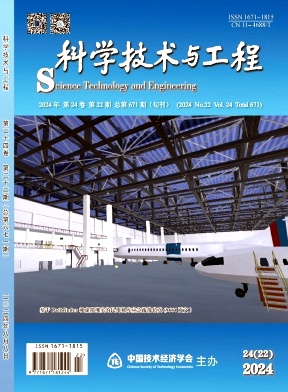
科学技术与工程
北核,科核,武A-,CACJ-权威
CN中文-旬刊影响因子1.543
-
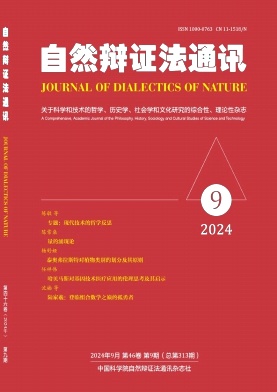
自然辩证法通讯(不收版面费审稿费)
C刊,北核,科核,AMI核心,武A-
CN中文-月刊影响因子1.052
-
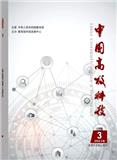
中国高校科技(原:中国高校科技与产业化)
AMI扩,武B+
CN中文-月刊影响因子1.63
-
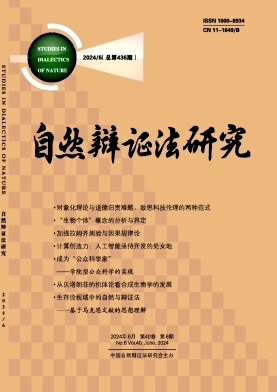
自然辩证法研究
C刊,北核,科核,AMI核心,武A
CN中文-月刊影响因子1.066
-
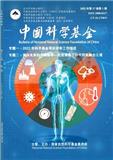
中国科学基金(不收版面费)
北核,C扩,CSCD,科核,AMI扩,武B+
CN中文-双月刊影响因子2.712
-
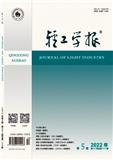
轻工学报(原:郑州轻工业学院学报(自然科学版))(不收版面费审稿费)
北核,武B+,CACJ-入库
CN中文-双月刊影响因子1.025
-
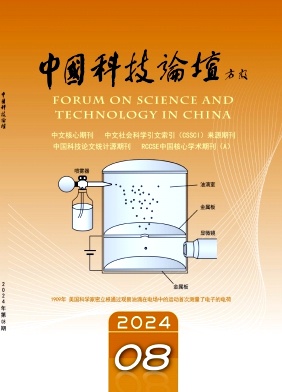
中国科技论坛
C刊,北核,科核,武A,AMI扩
CN中文-月刊影响因子2.895
-
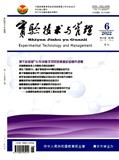
实验技术与管理
北核,科核,武A+
CN中文-月刊影响因子1.849
常见问题
-
数据科学杂志杂志社官网、联系方式是什么?
数据科学杂志杂志社官网:https://jds-online.org/journal/JDS
投稿网址:https://www.e-publications.org/ruc/sbs/JDS/login
投稿邮箱:JDS@ruc.edu.cn(官网邮箱) -
数据科学杂志杂志是核心期刊么?
数据科学杂志是核心期刊,级别是:AMI入库, 是:自科综合分类下的知网目次收录的期刊。
-
请问你们是数据科学杂志杂志社吗?
我们不是《数据科学杂志》杂志社。本站主要从事期刊信息展示与期刊推荐,不是任何杂志官网,直投稿件请联系杂志社。本站仅提供免费的学术指导、论文辅导、期刊投稿信息整理收集服务。
-
你们指导服务后可以保证文章被发表吗?
期刊发表的成功与否,主要取决于文章内容的质量。编辑老师会根据研究领域、创新性等多因素进行考量。我们会帮助您理解期刊的发表要求,助力提升发表几率,从而增加发表的机会。
-
晋级论文能否在报纸上发表?
在学术界,论文的发表往往被视为研究者职业发展的重要一环。晋级论文,即为了获得更高职称或学术地位而撰写的学术论文,通常需在专业期刊上发表。然而,许多人可能会问
